Stop Using These 5 Cleaning ‘Hacks’ That Secretly Ruin Your Home
After spending years in the cleaning and restoration business, you start to see patterns. And honestly, the most common pattern is seeing beautiful homes damaged by well-meaning advice. I’ll never forget a call about a gorgeous wood floor. The owner read online that a simple eraser could buff out a scuff mark. Instead, its abrasive texture completely stripped the floor’s finish, leaving a dull, glaring patch. That tiny “hack” snowballed into a very expensive refinishing project.
In this article
It’s moments like that which stick with you. They teach you that the real problem isn’t a lack of effort—it’s a lack of the right knowledge.
Most of us learn to clean from our parents or from 30-second videos online. Some of that wisdom is solid, but a lot of it is outdated or just plain wrong for modern materials. My job isn’t just mopping and scrubbing; it’s about preserving the life of stone, wood, and fabric. That means understanding a little bit about the science behind the grime. This guide is my way of sharing what the pros know. Let’s walk through the most common cleaning myths I see, why they’re so damaging, and what you should be doing instead.
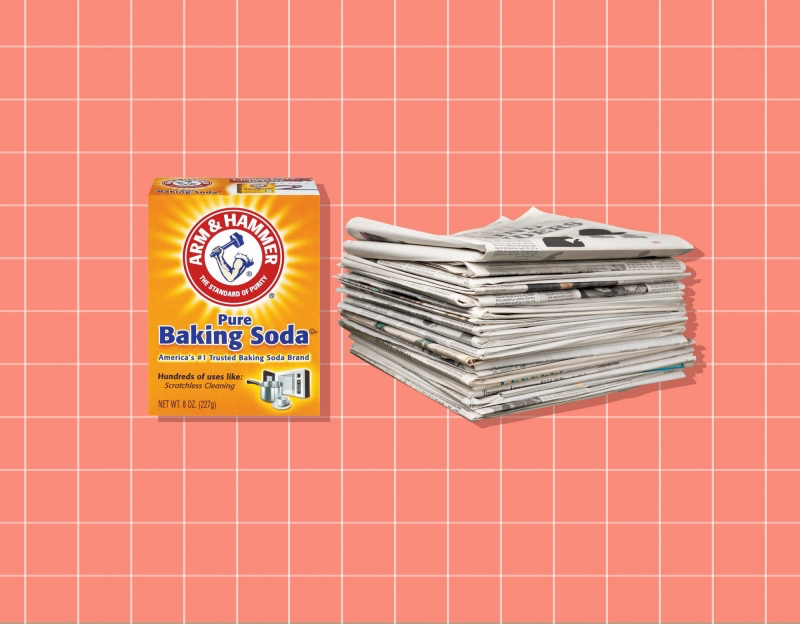
1. The Myth of the Instant Wipe: Why You Need to Let Cleaners ‘Dwell’
One of the biggest misconceptions comes from commercials: just spray, wipe once, and voilà—a perfect shine. In the real world, chemistry needs a minute to work. Almost every effective cleaning process relies on what we call “dwell time,” which is just the fancy term for how long a cleaner needs to sit on a surface to do its job.
What’s Happening While It Sits?
Cleaning agents aren’t magic; they’re designed for specific chemical reactions that take time. Think about it this way:
- All-Purpose Cleaners: The workhorses here are called surfactants. They need a few minutes to grab onto grease and lift it from the surface so it can be wiped away with water. Wiping too soon just smears a greasy, half-loosened mess around.
- Disinfectants: These are the germ-killers, and their effectiveness is serious business. If you read the label on a disinfecting spray, you’ll see a required contact time, often somewhere between 5 to 10 minutes. This is non-negotiable. The chemical needs that long to actually penetrate and destroy bacteria and viruses. Wiping it off after 30 seconds leaves you with a surface that looks clean but isn’t truly sanitized.
- Acidic Cleaners: For hard water stains and limescale, we use acidic cleaners. The acid needs several minutes to react with and dissolve those chalky mineral deposits. You can often see it fizzing slightly—that’s the reaction happening! Let it work.
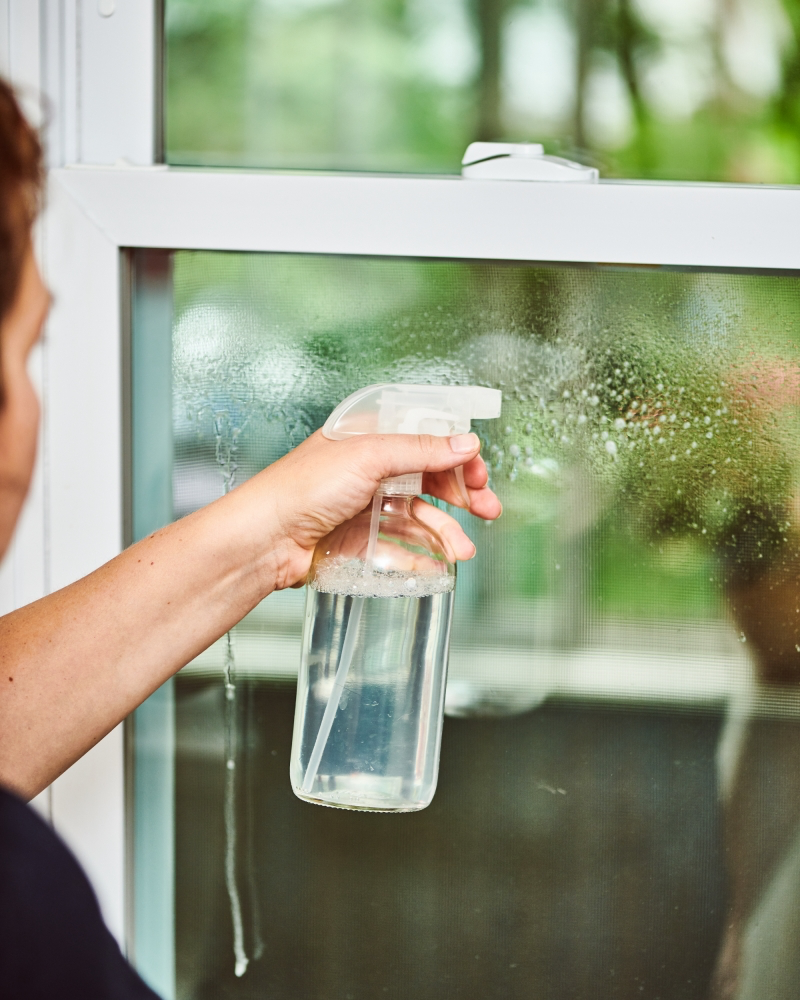
The Pro-Technique: Work in Sections
So, how do you use dwell time without just standing around? When we clean a bathroom, we work in a sequence. It’s a rhythm you can easily adopt:
- First, spray the shower walls and tub with a good tub & tile cleaner.
- Next, pour your toilet bowl cleaner into the toilet and let it sit.
- Then, spray the countertops and sink with an appropriate all-purpose cleaner.
- By the time you’ve done all that, the shower has had plenty of dwell time. Now you can go back to the beginning, give it a quick scrub, and rinse. It’s a simple system that lets every product work at peak power.
Heads up, though! Letting a cleaner sit for too long can also cause issues. Sometimes a strong product can damage a surface, but more often, it just evaporates and leaves behind a sticky residue that attracts even more dirt. Just follow the label directions.
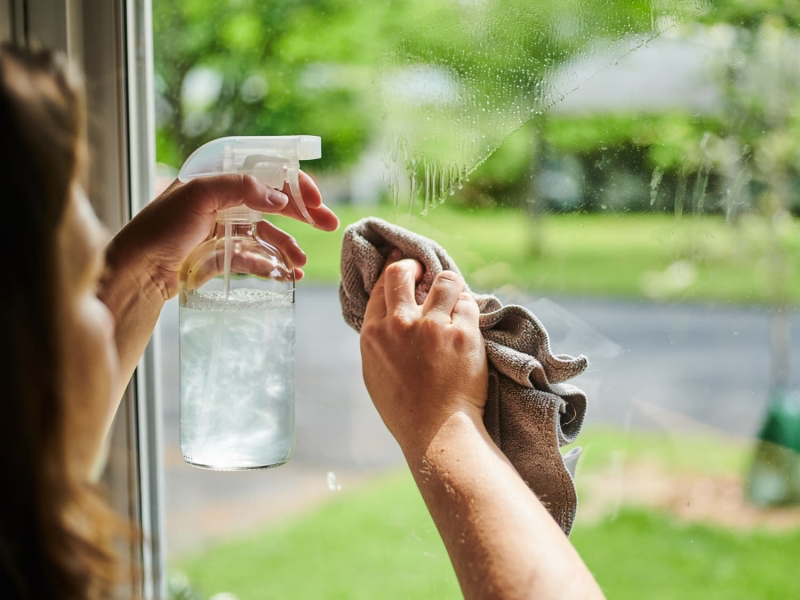
2. The Sandpaper Mistake: Using Abrasives on the Wrong Surfaces
I hear it all the time: “Just use a paste of baking soda!” or “scrub a wine stain with salt!” While the intention is good, this is like washing your car with sandpaper. You might get the spot off, but you’ll ruin the finish in the process.
To understand why, you have to think about hardness. In material science, there’s a scale of how easily something can be scratched. A harder material will always scratch a softer one. Here’s where common household items land:
- Baking Soda & Salt: These have a hardness of about 2.5. They feel soft to us, but on a microscopic level, they are crystalline and abrasive.
- Magic Erasers: These are made of melamine foam, which gets incredibly hard and abrasive on a microscopic level when wet—almost like super-fine sandpaper.
- Bar Keepers Friend: This is a fantastic cleaner, but it’s important to know what you’re using. The main ingredient is oxalic acid, which is great for rust, but the powder version also contains abrasive feldspar. Use the “soft cleanser” (pre-mixed liquid) for more delicate surfaces.
So, when you scrub your shiny acrylic countertop or your polyurethane-coated floor with baking soda, you’re grinding thousands of tiny scratches into the surface. To your eye, this just looks like a dull, hazy spot. The damage is done, and the only fix is a professional re-polishing.

Don’t You Dare Use Abrasives On: High-gloss finishes, polished stone, stainless steel appliances (you’ll scratch the grain right in), or car paint. It’s a one-way ticket to regret.
The Pro-Technique: Blot, Lift, and Dissolve
When we see a stain, scrubbing is the absolute last resort. For a liquid spill like red wine on carpet, we immediately start blotting with a clean, white towel. We press down firmly from the outside-in to stop it from spreading. Once we’ve lifted as much as possible, we bring in the chemistry. For a client with a red wine stain they thought was permanent, we used an oxidizing spotter, let it dwell, and then blotted it out. The stain completely vanished. It’s all about letting the right chemical do the heavy lifting.
QUICK TIP: The single most important rule I teach is to ALWAYS test a cleaner in a hidden spot first. Inside a closet, on the back of a cushion, under a rug—anywhere. This two-minute test has saved me from thousands of dollars in damage over the years. Do not skip it.
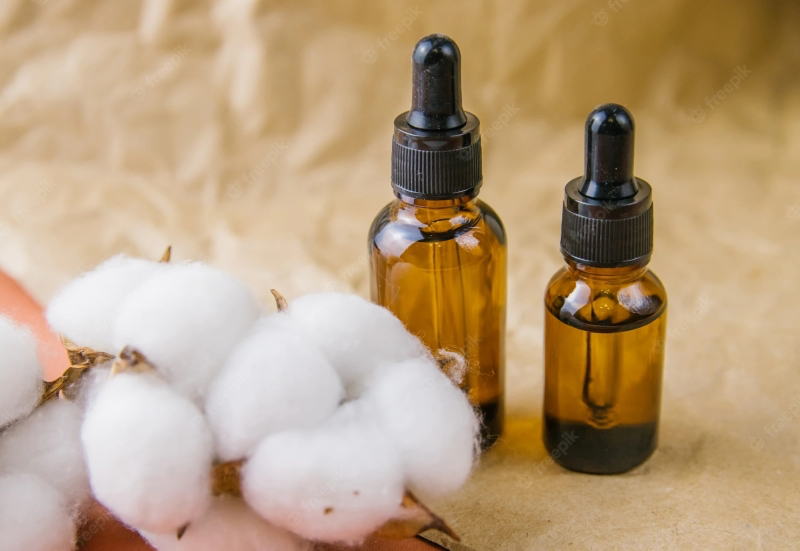
3. The Newspaper Myth and Getting a Truly Streak-Free Shine
Ah, the classic tip to use old newspapers to clean windows. It’s a piece of folklore that might have worked for our grandparents, but today, it will just leave you with a linty, inky mess. In the past, newspaper was denser and used petroleum-based ink that had some polishing properties. Modern newsprint is thin, recycled paper with water-soluble soy ink. It disintegrates almost instantly when wet.
Streaks on glass are just residue—dirt you missed, or minerals left behind by your cleaning solution. The key to a perfect shine is leaving nothing behind.
The Pro-Technique: Distilled Water and Two Cloths
Here is my go-to glass cleaning formula. It costs next to nothing and outperforms almost every commercial product.
The Recipe: In a clean spray bottle, mix one part distilled water with one part plain white vinegar. That’s it. You can get a gallon of distilled water for about a dollar at any grocery store, and it’s the secret ingredient. Your tap water contains minerals that get left behind as spots when the water evaporates. Distilled water is pure, so it evaporates completely, leaving zero residue.
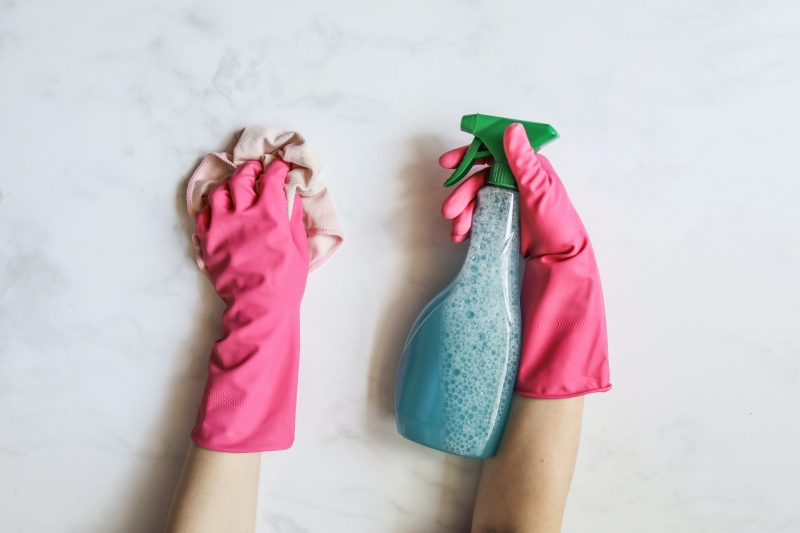
CRITICAL WARNING: Do NOT use this vinegar solution on natural stone surfaces like marble, granite, or travertine countertops and floors. The acid will chemically burn, or “etch,” the stone, leaving a permanent dull mark. Stick to a pH-neutral stone cleaner for those surfaces.
For the actual cleaning, forget paper towels and use the two-cloth method:
- Cloth 1 (The Scrubber): A lightly damp microfiber cloth. Wring it out so it doesn’t drip. Use this to wipe down the whole surface and break up the grime.
- Cloth 2 (The Polisher): A second, completely dry, low-pile (waffle-weave style) microfiber cloth. Immediately after wiping with the damp cloth, polish the surface dry. This removes all moisture before it can evaporate and leave streaks.
A great set of microfiber cloths is a one-time purchase of about $15-$20 on Amazon or at Home Depot and will change the way you clean. For big windows, a professional squeegee (Unger makes great ones) is even faster once you get the hang of it.
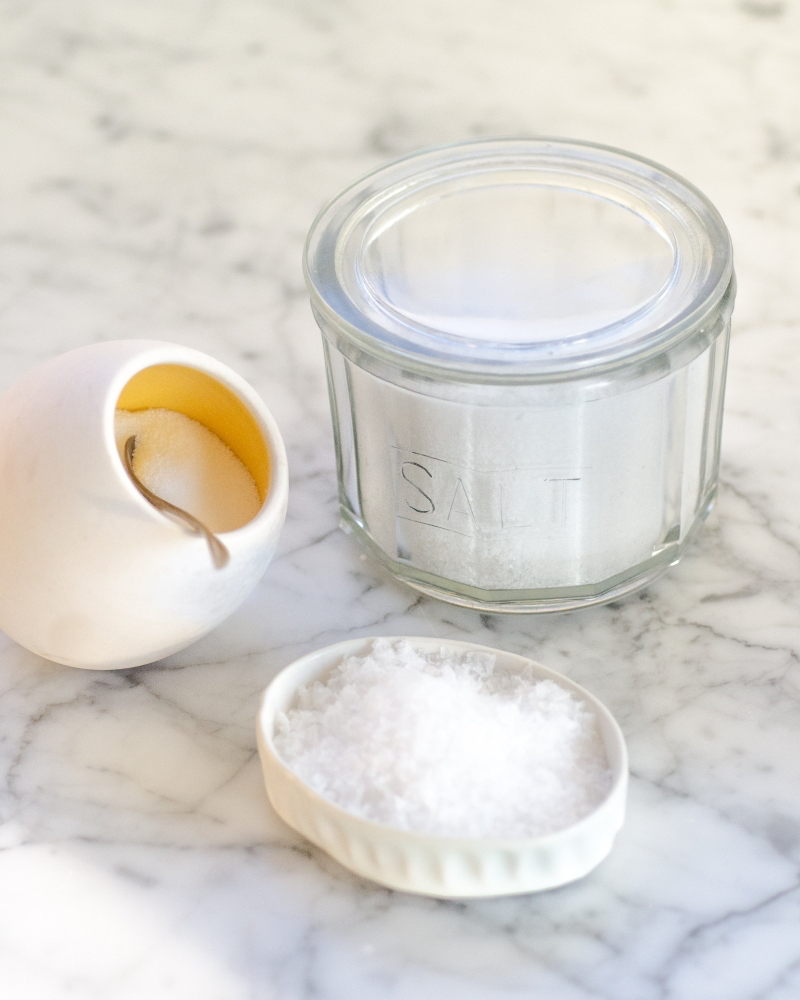
Try This Now: Go clean your bathroom mirror your old way. Then try the two-cloth microfiber method. I guarantee you’ll see the difference. You won’t go back.
4. Covering Up Smells vs. Actually Eliminating Them
We all love a home that smells “fresh,” but most products promising a “mountain spring” scent don’t actually clean the air. They just cover up the problem.
Most aerosol fresheners and plug-ins work by either releasing a perfume so strong it overwhelms your nose, or by using chemicals that literally deaden your sense of smell. You think the bad odor is gone, but really, your nose has just been temporarily disabled. Plus, these fragrances often release VOCs (Volatile Organic Compounds) that can irritate your lungs.
The Pro-Technique: Find and Destroy the Source
As a restoration pro, my job is to get rid of odors for good. The only way to do that is to remove the source.
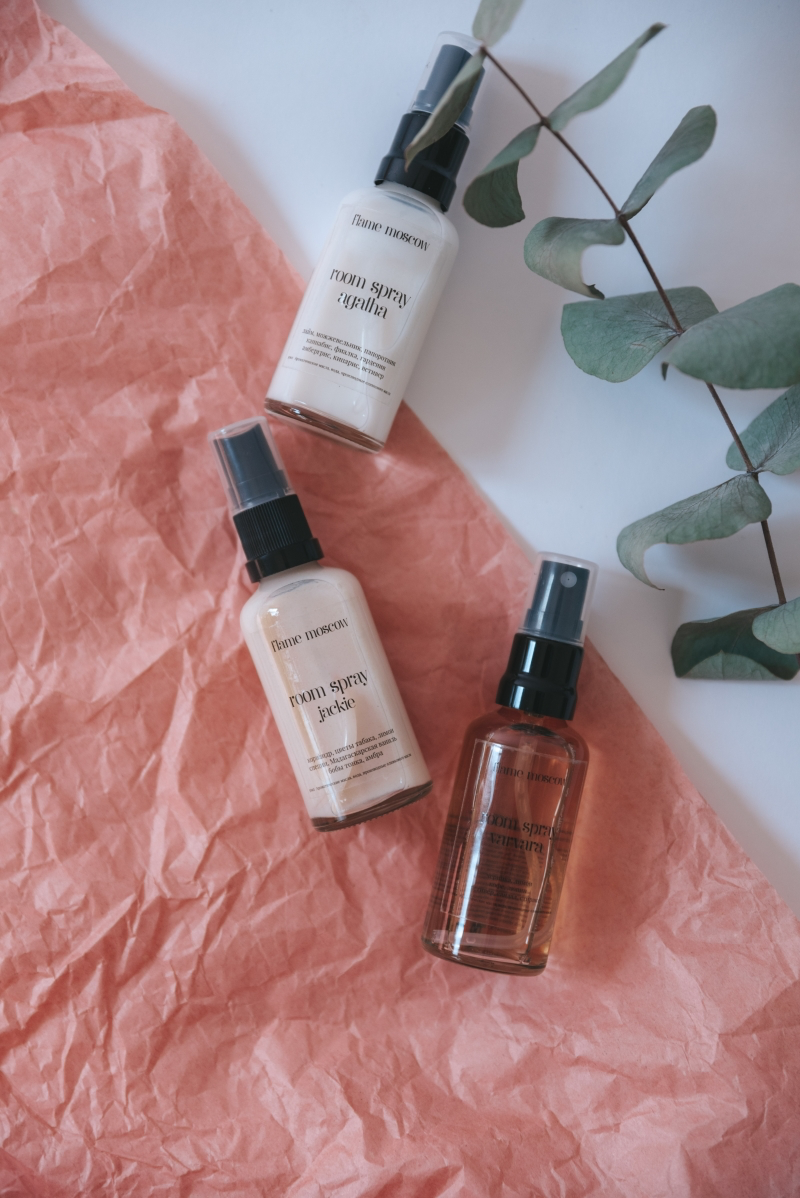
- Play Detective: Is it a pet accident on the rug? A stinky garbage can? Mildew in the basement? You have to find what’s causing the smell.
- Use the Right Weapon: For organic odors (pet urine, spoiled food, etc.), you need an enzymatic cleaner. These products don’t just mask smells; they release enzymes that literally digest and destroy the odor-causing bacteria. Look for brands like Rocco & Roxie on Amazon or at pet stores; a bottle runs about $20 and is worth every penny.
- Absorb and Ventilate: After cleaning, you can remove lingering odors with activated charcoal. You can find bags of it online or in the aquarium section of pet stores. A 200g bag is perfect for a musty closet or small bathroom. And of course, never underestimate the power of opening the windows.
For extreme cases like smoke damage, we use heavy-duty tools like ozone generators. But let me be crystal clear: these are for trained professionals in unoccupied spaces ONLY. Ozone is toxic to breathe and can damage materials in your home. This is a situation where you must call a certified pro.
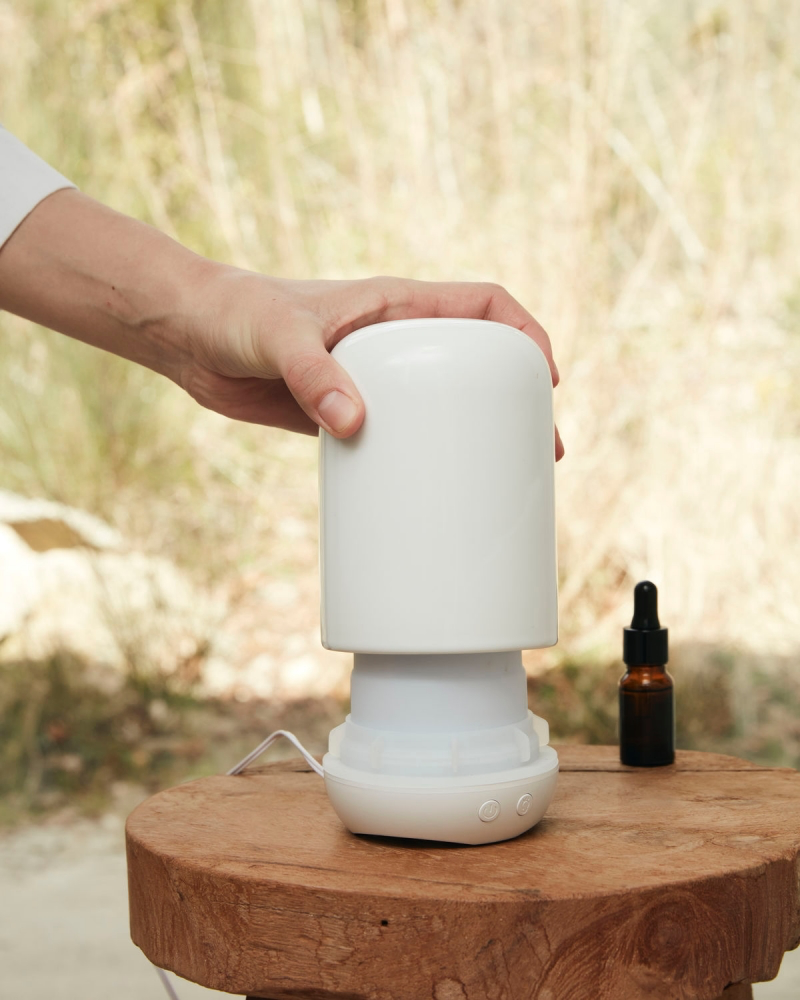
Final Thoughts: Clean Smarter, Not Harder
Over the years, I’ve learned that great cleaning isn’t about miracle products. It’s about patience and knowledge. It’s about respecting the materials in your home and understanding the tools you’re using. Rushing in with the wrong chemical or a harsh scrubber is usually the fastest way to a bigger, more expensive problem.
Your home is your biggest investment. Taking care of it properly protects its value and makes it a healthier, more enjoyable place to be. So next time you see a cleaning tip that sounds too good to be true, take a second to think. A little bit of smart work with the right method will always win against a quick hack in the long run.
Inspiration:
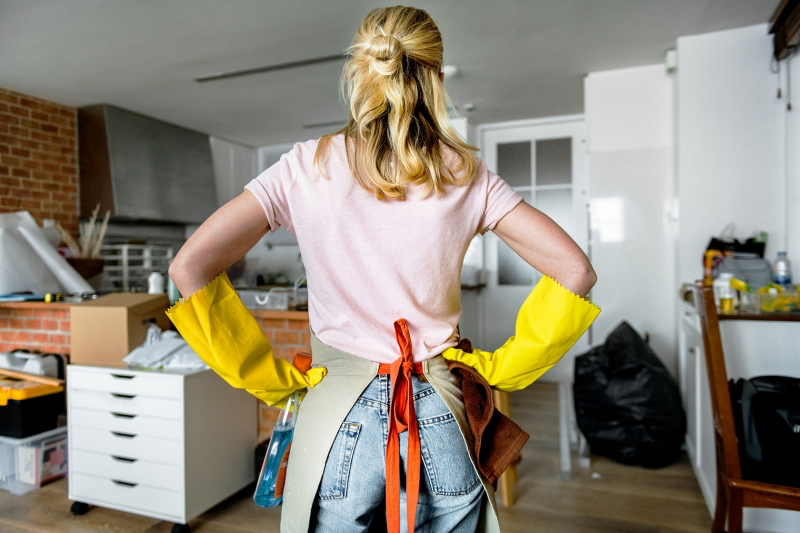
Why does my stainless steel fridge look streaky and scratched, no matter how much I clean it?
The culprit is almost always twofold: using the wrong tool and ignoring the material’s ‘grain.’ Many stainless steel surfaces have a very fine, brushed finish with a visible direction. When you scrub against this grain with an abrasive sponge (like the common green scouring pads) or gritty cleansers, you create thousands of micro-scratches. These scratches trap dirt and disrupt the way light reflects, leading to a permanently dull, streaky appearance. The professional fix is simple: use a soft microfiber cloth, like those from E-Cloth, and always wipe in the same direction as the grain. For a perfect finish, a dedicated product like Weiman Stainless Steel Cleaner & Polish is designed to fill in those tiny imperfections and restore the shine.










